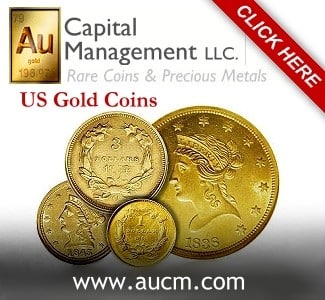By James McCartney – Senior Numismatist, Stack’s Bowers ……
Over $1.2 million in California Gold Rush coins will be sold by Stack’s Bowers Galleries in their August 2020 Las Vegas Auction, scheduled to be held August 4-7. A highlight from this group is a rare octagonal $50 gold coin struck by the United States Assay Office in 1851 that ranks as one of the very finest surviving examples. Known as a Humbert $50, after the chief assayer at the time, this coin brought $370 at its first auction appearance in 1929 but could sell for more than $500,000 USD in the Stack’s Bowers Galleries August sale.
The surfaces display flashy luster and bright lemon-yellow color with warmer shades around the devices. The strike is exceptional, with incredible definition to the beaded circle and the eagle’s feathers on the obverse. Graded MS-64 by PCGS and awarded a green sticker by CAC for superior quality, it ranks as the sole finest example evaluated by either service. Appearing in lot 1320 of the Stack’s Bowers Galleries auction, it would serve as the centerpiece to even the most accomplished cabinet of Gold Rush Coinage.
James Wilson Marshall’s discovery of gold in California’s American River on January 24, 1848, kicked off one of the largest and certainly most romanticized gold rush in United States history. As news of this discovery spread, 300,000 people from both the Eastern United States and abroad would eventually make their way to California seeking wealth and prosperity. As early as 1849, proposals were introduced both in the California Legislature and United States Congress calling for the establishment of an assay office or branch mint to meet the needs of the growing economy and manage the outpouring of gold from the landscape.
A bill passed through Congress on September 30, 1850, established the United States Assay Office to be located in San Francisco. Local firm Moffat & Co. received the contract to operate as the United States Assay Office, with New York watchmaker Augustus Humbert appointed as United States Assayer.
Humbert arrived in San Francisco on January 30, 1851, and the first coins, $50 gold pieces, were issued the following day. These octagonal $50 “slugs”, as they’re commonly called, are historic and captivating relics of the Gold Rush Era. This octagonal design was considered so iconic that it served as inspiration for one of the $50 gold coins commemorating the 1915 Panama-Pacific Exposition struck at the San Francisco Mint. Over a century later, it still captures the imagination of today’s collectors. Often found in heavily worn condition from extensive circulation, very few remain virtually untouched like the impressive MS-64 (PCGS) CAC example offered in the Stack’s Bowers Galleries August 2020 auction.
